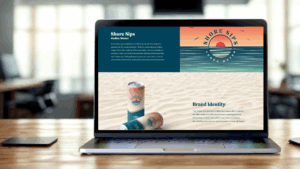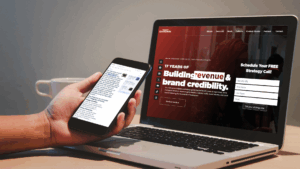“Unfortunately, the power and overall adaptability of a website is not always fully utilized.”
The internet is an INCREDIBLE resource and has opened up an exciting array of new possibilities. More and more people are able to access information and entertainment than ever thought possible through traditional forms of media. It significantly impacts those with disabilities as the vast wealth of digital information can be manipulated to meet differing viewpoints. Unfortunately, the power of the web is not always utilized. Those with disabilities can find it very difficult to navigate with poor website accessibility.
There are many reasons as to why you should aim to improve the accessibility of your site. One major reason is because it is a law in many countries. For example, in the UK, website accessibility falls under the Disability Discrimination Act. If your website fails to comply then legal action can potentially be brought up against you. Legal issues aside: Why wouldn’t you want your website to be available to the LARGEST AUDIENCE possible by making it easily accessible by everyone?
The Web Accessibility Initiative was established by the W3C in order to promote accessibility on the web. This initiative aims to educate people on how those with disabilities use the web. In addition, guidelines have been created for web designers and developers to follow. Many of these guidelines are very simple to follow and are easy to implement.
To allow your website to be seen by THE LARGEST audience possible, we at Adapting Social have come up with some useful tips to help you meet these guidelines and improve the overall accessibility of your site!
Consider Your Colors
It is estimated that approximately ten million men in the United States suffer from some form of color blindness. The most common types are Deuteranopia and Protanopia. Those who suffer from these problems have trouble distinguishing the difference between red, green, and similar colors. With such a large amount of people with this condition, it is worth considering when designing and coding your website. A well-designed website will generally not cause any problems for someone with color blindness. However, it is worth considering when designing interactive or call-to-action elements. An example of this would be a simple text link styled red with no other decoration. This would be nearly impossible to see if it is in a block of gray or black text. It is helpful to use more than one type of decoration such as an underline or background color to make the words stand out.

An extremely useful tool for designers is TopTal’s Color Picker, which will provide several different filters that mimic how color blind users would perceive a website. In order to use it, simply type the URL of a website and select what filter you would like to use. Loading may take some time, however, think of all the people that can now view your website correctly!
Alternative Content
One of the core principles of the Web Accessibility Initiative is to make content on the web available to everyone regardless of what disability they have. There will always be some type of content that cannot be made accessible to some users, such as audio to those that are deaf. In this specific scenario, you should always provide alternative content where it is possible to view instead.
Be sure to provide text alternatives for any content that does not contain text so that it can be changed into other forms where people need large font, Braille, simpler language, or even symbols.
For example, if you put a video of an interview on your website, you could consider having a transcript of that interview for users to download or read on the site. Another simple method would be to put captioning on the video itself. Interestingly enough, YouTube is actually experimenting with using speech recognition software to make their site more accessible.
To take this one step further, you can provide a link to a text-only version of your website. This method will make your website a lot more accessible to those with slower Internet connections as well.

Using the Alt Attribute Properly
We are all aware of alt text. It is that text that we must add to an image in order to validate our websites. It is common for everyone to use them, right? Not so surprisingly, there are plenty of websites that don’t and those that often use them incorrectly. As a matter of fact, there is a lot of debate about how to properly use the alt attribute.
The three main uses of the alt attribute are:
- Assistive technologies, such as screen readers that use alt text and read it out loud to the user.
- Alt text is displayed rather than an image when those with a text-only browser or a slow Internet connection have disabled images.
- Search engines also happen to use the alt text in order to store information about the page since they cannot read the content of images.
Factually, alternative text for images depends on the context in which it is placed.
As a general rule, it is best that you do not mention phrases such as “an image of” or “a picture of” when providing alt attribute values. The alt attribute will ONLY benefit those who cannot see the image for various reasons, therefore, telling the user that there is an image adds no real value other than clearing up some potential confusion.
Enhance Website Accessibility with the Leading Web Design Agency in NJ
At Adapting Social, a digital marketing agency in NJ, we understand the critical importance of accessibility in web design. Ensuring your website is accessible from the earliest stages of planning and building not only benefits users with disabilities but also enhances the overall user experience for everyone. Incorporating accessibility considerations early in the design process makes it easier to implement these practices, ultimately leading to a more inclusive, user-friendly website. Plus, prioritizing accessibility can also give your site a significant boost in search engine rankings.
By choosing Adapting Social’s web design services NJ, you’re partnering with a team dedicated to creating websites that are both beautiful and accessible. We specialize in designing sites that adhere to the best practices in accessibility, ensuring that your business reaches the widest possible audience. Let us help you build a website that not only meets accessibility standards but also drives engagement and growth for your business.
Contact us today to start making your website more inclusive and effective.













